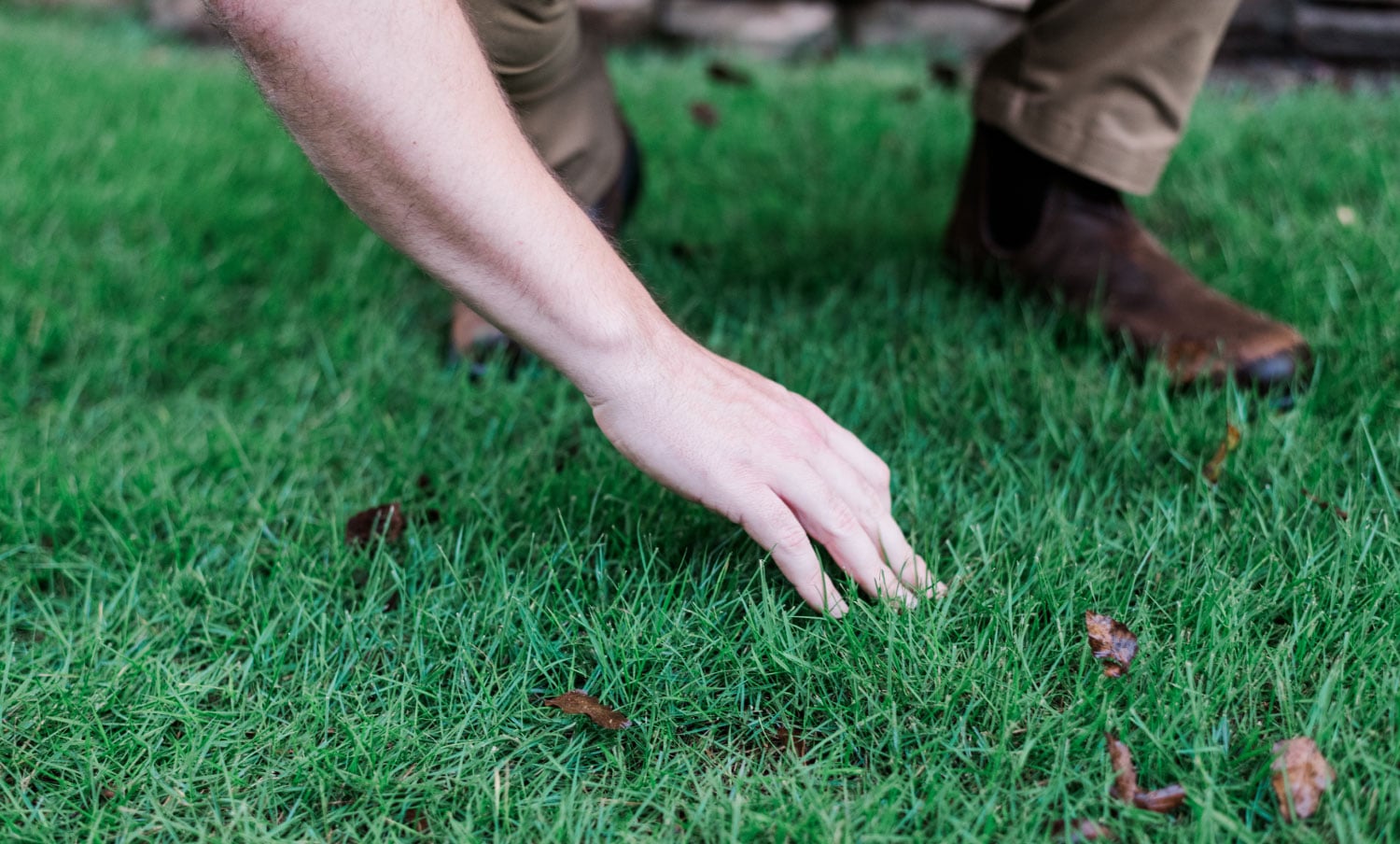In a previous blog about weed control, we discussed some of the reasons for breakthrough in weed control as it applies to the growing season for bermuda and zoysia lawns. Weeds may appear in winter lawns, too. While the perspective changes a little during dormancy, many of the ideas for how to control the weeds still apply.
How Does Mowing Affect Winter Weeds?
Late summer, fall, and winter cultural practices have significant impacts on winter weed suppression. We talk all summer about mowing at the correct heights, mowing with proper frequency, and watering an appropriate amount at ideal intervals. The goal of successfully executing these tasks is density. Not only is a dense lawn beautiful but also functional. A thick canopy shades the soil surface, resisting the germination of weeds that require light and increasing competition with all weeds for light, water, and nutrients. While dormant lawns may not be as competitive for water and nutrients, the shade provided by a thick canopy still helps limit winter weed introduction.
Cultural practices in the growing season, especially in fall prior to dormancy, are paramount for density through winter. If a lawn is scalped mid-summer, it likely recovers in a few weeks. If done late enough in the fall, it may not recover before dormancy, meaning the thinness will persist until spring green-up. Dormant scalping, while great to reduce cut height, should be done late winter/early spring just before green-up to maintain the dormant canopy as long as possible. Once it’s gone, it won’t return until the grass is growing actively enough to regenerate it.
Help! Pre-Emergents Were Applied, but I Have Winter Weeds
Pre-emergent weed control products are a cornerstone of cleanliness for any program. We utilize the best products available, and we have great technicians trained to make complete applications. If that’s the case, then why would we see weeds?
There are many factors that influence how effective pre-emergents are, the most influential of which can be the environment. Summer heat and light degradation are replaced with wet weather and warm spells in the winter.
Regardless of which pre-emergent product is chosen, the active ingredient is mixed with water and moves down into gaps between soil particles called pores. It has to be a liquid so it can be absorbed by the roots of new weeds, stopping root formation. Since it is liquid, the amount of water in the soil can impact effectiveness. Too little water may cause the product to dry in the pores. If it’s dry, it can’t be absorbed by the roots. Too much water could result in dilution. Think of it like a Coke after all of the ice has melted. It still tastes like Coke, but it’s weak because the amount of water has increased. The same happens when there is too much moisture in the soil. Additionally, excessive water can move the pre-emergent weed control product away from an area or take the product too deeply for the new roots to be hurt by it.
Wet winter weather in Atlanta can often be accompanied by warm temperatures. Unseasonably warm weather may allow weed seeds to begin growth and small weeds to become large weeds. While winter weeds tolerate cold weather, they are more active and grow more rapidly during warm spells.
What Can I Do to Control the Weeds?
- Schedule application of post-emergent weed control products. At Nature’s Turf, we spray post-emergent weed control products when onsite for program applications.
- If necessary, schedule service calls to control weeds between regular applications. The products chosen vary based on season and weeds we will likely encounter, ensuring that what we are spraying will control the present pests. While warm, wet weather can increase the amount of visible weeds, cold temperatures can make it more difficult to control them once present. If you would like to know more about that, we speak about it in this blog.
- Treat beds adjacent to turf areas, and keep those areas clean. This is a great way to limit the potential for introduction of winter weeds into your turf, and hand-pulling when small is always an option if desired. While not a requirement for turf health in the winter, regularly cutting winter weeds can injure them, reducing the amount of energy available to produce flowers, seeds, or bulbs in the case of onion and garlic. Be careful to avoid removing any turf tissue when doing these winter maintenance mows. As outlined above, it’s important to maintain as much canopy tissue as possible through dormancy.
Important Takeaways:
- Mowing practices and watering practices, especially late in the growing season, can greatly influence suppression of winter weeds in dormancy.
- Scalping before spring growth should be done as late as possible to maintain canopy density.
- Pre-emergent weed control products are dissolved in water. The amount of water present can greatly impact how effective it is.
- Controlling weeds in beds near turf areas and cutting weeds while dormant can be effective in slowing growth.
- Nature’s Turf selects post-emergent weed control products based on the season to successfully control any weeds that might sneak by the defenses of our industry-leading pre-emergents.








